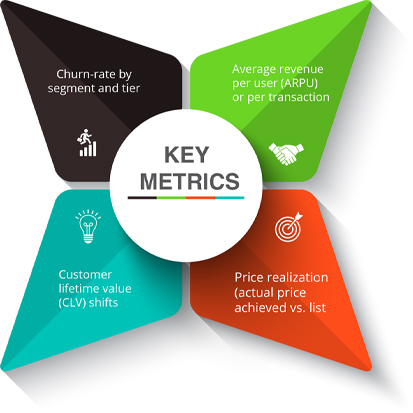
Inflation is more than a macroeconomic statistic; it is a daily reality for business leaders whose input costs—raw materials, labor, energy, logistics—rise seemingly overnight. Companies that lack pricing power simply absorb these increases, watching profit margins evaporate. Yet organizations that understand and strategically wield pricing power can not only defend profitability but also reinforce customer perceptions of fairness and value. In an environment where every percentage point of margin counts, mastering pricing power becomes a critical capability.
Before you adjust a single price, you must pinpoint what your customers genuinely value. In retail, this may be product quality, brand cachet, or convenience. In hospitality, it could be location, personalized service, or unique amenities. Business‑software buyers often care most about reliability, integrations, and support responsiveness. Conducting willingness‑to‑pay studies—via surveys, conjoint analysis, or analysis of historical purchase behavior—reveals which features or services command premium prices.
For example, a boutique hotel in Kingston found through guest interviews that its curated local‑culture experiences (private rum‑tasting tours, chef‑led cooking classes) were disproportionately valued by leisure travelers, who were willing to pay 10–15% more for packages that included them. The hotel was able to raise package prices accordingly while leaving standard room‑only rates unchanged—protecting price‑sensitive bookings and boosting package revenue.
Armed with value insights, develop tiered pricing structures that align price points with customer segments. A software‑as‑a‑service (SaaS) firm might offer three editions: “Essentials” for small teams at a base rate, “Professional” for growing businesses with advanced analytics, and “Enterprise” with dedicated support and custom integrations. By selectively increasing the “Professional” tier by 5%—where customers derive high incremental value—the firm offset rising cloud‑hosting costs without materially affecting churn in the Essentials tier.
In retail, tiered pricing can play out across channels. An omnichannel apparel brand introduced a “premium” collection sold exclusively online at a 7% markup, while maintaining existing price points in brick‑and‑mortar stores to sustain foot traffic. This approach captured extra margin from customers who prioritized home delivery and exclusive designs, without risking in‑store sales volume.
accessible to other sectors. These systems adjust prices in real time based on demand, inventory levels, competitor pricing, and external signals (weather, events, seasonality). A regional theme park implemented dynamic ticket pricing tied to forecasted daily attendance and historical peak‑day patterns. On high‑demand weekends, ticket prices rose by 10–20%, capturing incremental revenue while still filling capacity. On off‑peak days, discounts stimulated attendance that would otherwise have been lost.
Key to dynamic pricing success is transparency. Parks communicated that price fluctuations reflected anticipated crowding and operational costs, and offered capped “advance‑purchase” rates to reward early planners. The result was a 12% increase in average daily revenue and smoother visitor distribution across the season.
Another route to pricing power is unbundling your offering and monetizing high‑value components. A healthcare provider, facing rising staffing and equipment costs, introduced tiered wellness packages: basic consultations remained at existing rates, while packages including same‑day diagnostics, personalized care plans, and tele‑health follow‑ups carried a premium. Patients who valued speed and convenience adopted the higher tiers, subsidizing overall cost increases without limiting access to essential services.
Similarly, a B2B equipment‑leasing firm began offering “priority maintenance” as an add‑on to its base leases. Customers who depended on uptime were willing to pay 8% more for guaranteed 24‑hour service windows. This value‑based bundling preserved base lease rates and generated a new, high‑margin revenue stream.
No matter which pricing approach you choose, how you communicate changes matters enormously. Surprise surcharges breed resentment; transparency builds trust. Frame price adjustments as a shared challenge: explain rising supplier costs or regulatory fees, outline steps your organization is taking to control its own expenses, and then describe the modest price changes required to maintain quality and service.
For example, a food‑service distributor sent clients a brief whitepaper showing commodity‑price trends, logistics‑cost inflation, and efficiency measures the company had implemented. The communication concluded with a modest “fuel and commodity surcharge” of 3%, tied explicitly to those cost trends. Clients responded positively, appreciating the data‑driven rationale and the distributor’s efforts to mitigate costs internally before passing any remaining burden on.
Testing, Monitoring, and Iteration
Implementing pricing changes without measurement is like sailing without a compass. Use controlled A/B tests or pilot programs to gauge customer reactions. A SaaS vendor piloted a 4% price increase on its Professional tier with 10% of its customer base, monitoring churn, usage patterns, and support inquiries versus a control group. When churn remained flat and usage held steady, the vendor rolled out the increase broadly.
Continuously track key metrics:
- Churn rate by segment and tier
- Average revenue per user (ARPU) or per transaction
- Price realization (actual price achieved vs. list price)
- Customer lifetime value (CLV) shifts
If adverse signals emerge—such as elevated churn in a target segment—be prepared to adjust or grandfather select customers. The goal is an agile pricing capability that responds to real‑time feedback.

Pricing power initiatives require close collaboration with sales and customer‑success teams. Equip these teams with tools and training to articulate the value behind price changes, handle objections, and identify opportunities for customized packaging. A professional‑services firm that raised hourly rates by 6% conducted workshops with its consultants, providing talking points, case studies of successful engagements, and guidelines for negotiating multi‑year retainer contracts at the new rates. Empowered by these resources, the sales force achieved a 95% acceptance rate on renewals at higher rates.
Modern pricing solutions integrate with ERP and CRM systems, delivering real‑time dashboards that display margin performance by product, customer, and region. Machine‑learning algorithms can recommend optimal price points by analyzing historical sales elasticity, competitor pricing feeds, and macroeconomic indicators. Implementing these tools—whether commercially available platforms or custom analytics—accelerates your ability to test, deploy, and refine pricing strategies at scale.
A wholesale industrial‑supplies distributor faced 15% year‑over‑year increases in steel and plastic resin costs. Rather than a blanket markup, the distributor:
- Conducted customer segmentation, identifying high‑margin, low‑price‑sensitivity accounts (infrastructure contractors) vs. price‑sensitive small workshops.
- Introduced a “priority fulfillment” tier with 5% premium for guaranteed same‑day delivery.
- Applied a 3% commodity surcharge to base orders, clearly linked to published raw‑material indices.
- Implemented a dynamic rebate program: customers who increased quarterly purchase volumes by 10% received retroactive rebates.
Over six months, the distributor preserved overall margin, grew volume among priority‑fulfillment customers by 12%, and increased share of wallet in its target segment. Customer complaints were minimal, thanks to transparent communication.
Inflation need not be a margin‑destroyer. By understanding true customer value, deploying tiered and dynamic pricing architectures, transparently communicating changes, and rigorously measuring impact, organizations can transform inflationary pressures into opportunities to strengthen pricing power. Technological enablers and close alignment with sales further ensure that price adjustments stick—and that customers perceive them as fair exchanges for continued or enhanced value.
Ready to defend your margins and build lasting pricing power? Message The Phantos Group on WhatsApp: +1‑876‑375‑8822.
Receive updates on new articles
